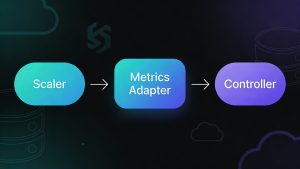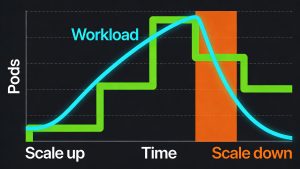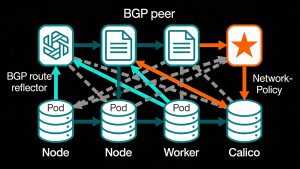In a significant development for the artificial intelligence industry, OpenAI, the creator of the revolutionary ChatGPT, has experienced remarkable growth in India. Sam Altman, the founder and CEO of OpenAI, recently revealed that India has solidified its position as the company’s second-largest market globally. This announcement comes as a testament to the rapidly expanding influence of AI technologies in the world’s most populous democracy.
Altman’s Visit to India: Strengthening Ties
During his recent whirlwind tour of Asia, Altman made a crucial stop in India, landing late on a Tuesday night. His visit was marked by a series of high-profile meetings and engagements that underscored the importance of India in OpenAI’s global strategy.
Key Meetings and Discussions
Altman’s itinerary included a significant meeting with IT Minister Ashwini Vaishnaw, where the two discussed India’s approach to AI development and potential areas of collaboration. The OpenAI CEO also engaged with numerous startups and venture capital funds, exploring the vibrant ecosystem of innovation in the country.
Potential Meeting with Prime Minister
Reports suggest that Altman’s visit may also include a meeting with Prime Minister Narendra Modi, further highlighting the strategic importance of AI in India’s technological and economic future.
India’s Three-Pronged Approach to AI
During the discussions, Minister Vaishnaw outlined India’s comprehensive strategy for AI development, focusing on three key areas:
- Chip Design: Developing specialized hardware to power AI computations
- Foundational Models: Creating large-scale AI models to drive innovation
- AI Applications: Implementing AI solutions across various sectors of the economy
This multi-faceted approach demonstrates India’s commitment to becoming a leader in the AI revolution, with Altman expressing admiration for the country’s progress in building a complete AI stack.
The Changing Landscape of AI Model Development
DeepSeek’s Impact on the Industry
The AI community has been abuzz with the recent success of DeepSeek, a Chinese AI lab that has developed a foundational model comparable to OpenAI’s at a significantly lower cost. This achievement has sparked discussions about the democratization of AI development and the potential for more players to enter the field.
Cost Considerations in AI Development
Addressing the issue of AI model development costs, Altman provided insights into the economic dynamics of the industry. He noted that while frontier research continues to require substantial investments, the cost of producing a given unit of AI intelligence tends to decrease rapidly over time.
Altman explained, “There are two different ways to look at the cost of the models: to stay at the frontier, we believe, those costs will continue to rise on this exponential curve. But also the returns to increase the intelligence are exponential…”He further added, “On the other side of it, the cost of a given unit of intelligence one year later seems to fall by 10x… but I don’t think the world is going to need any less AI hardware.
“This perspective highlights the complex interplay between technological advancement, cost reduction, and market demand in the AI sector.
India’s Potential in Cost-Effective AI Development
Minister Vaishnaw drew compelling parallels between India’s success in cost-effective space missions and its potential to develop affordable AI models. He highlighted the country’s innovative approach and its ability to create impactful solutions at a fraction of the cost compared to other nations.
“Our country sent a mission to the Moon at a fraction of the cost… why can’t we do a model which will be a fraction of the cost… So yes, innovation will bring that cost down within applications in healthcare and education, agriculture, weather forecasting, disaster management…,” Vaishnaw stated.
This vision of cost-effective innovation aligns well with India’s broader goals of technological self-reliance and global competitiveness.
Collaboration and Future Prospects
The discussions between Altman and Indian officials have opened doors for potential collaboration in various aspects of AI development. Minister Vaishnaw expressed India’s willingness to work with OpenAI on developing the entire AI stack, including GPUs, models, and applications.
In a post on social media platform X, Vaishnaw shared, “Had a super cool discussion with @sama (Altman) on our strategy of creating the entire AI stack — GPUs, model, and apps. Willing to collaborate with India on all three.
“This potential collaboration could lead to groundbreaking advancements in artificial intelligence, benefiting both India and the global tech community.
Clarifying Past Statements and Looking Forward
During the visit, Altman took the opportunity to address a previous controversy regarding his comments on the feasibility of companies outside the US building products like ChatGPT. He clarified that his statement was taken out of context and reaffirmed his belief in the importance of global competition and innovation in AI development.
“We are now in a world where we have made incredible progress with distillation. We have learned to do small models and these reasoning models in particular… It’s not cheap, it’s still expensive to train them, but that is going to lead to an explosion of really great creativity. India should be a leader there, of course,” Altman stated, emphasizing the potential for innovation in AI development across the globe.
The Road Ahead for AI in India
As India continues to strengthen its position in the AI landscape, the collaboration between OpenAI and Indian entities could pave the way for groundbreaking advancements in artificial intelligence. The country’s vast talent pool, growing technological infrastructure, and government support create a fertile ground for AI innovation.
The tripling of OpenAI’s user base in India over the past year is a clear indicator of the country’s appetite for cutting-edge AI technologies. This growth not only benefits OpenAI but also stimulates the local ecosystem, encouraging Indian startups and researchers to push the boundaries of what’s possible with AI.
Conclusion: A Bright Future for AI Collaboration
The visit of Sam Altman to India and the discussions that ensued mark a significant milestone in the global AI landscape. As India positions itself as a key player in AI development and adoption, collaborations with industry leaders like OpenAI could accelerate the country’s progress in this critical field.
The combination of India’s innovative spirit, cost-effective approach, and vast market potential with OpenAI’s cutting-edge technology and global expertise creates a powerful synergy. This partnership has the potential to drive transformative changes across various sectors, from healthcare and education to agriculture and disaster management.
As the world moves towards an AI-driven future, India’s role in shaping this landscape becomes increasingly crucial. The country’s success in fostering a thriving AI ecosystem could serve as a model for other emerging economies, demonstrating how nations can leverage technology to address unique challenges and drive inclusive growth.
With continued collaboration, investment, and innovation, India is well-positioned to become a global leader in AI development and application, contributing significantly to the advancement of this transformative technology on the world stage.



